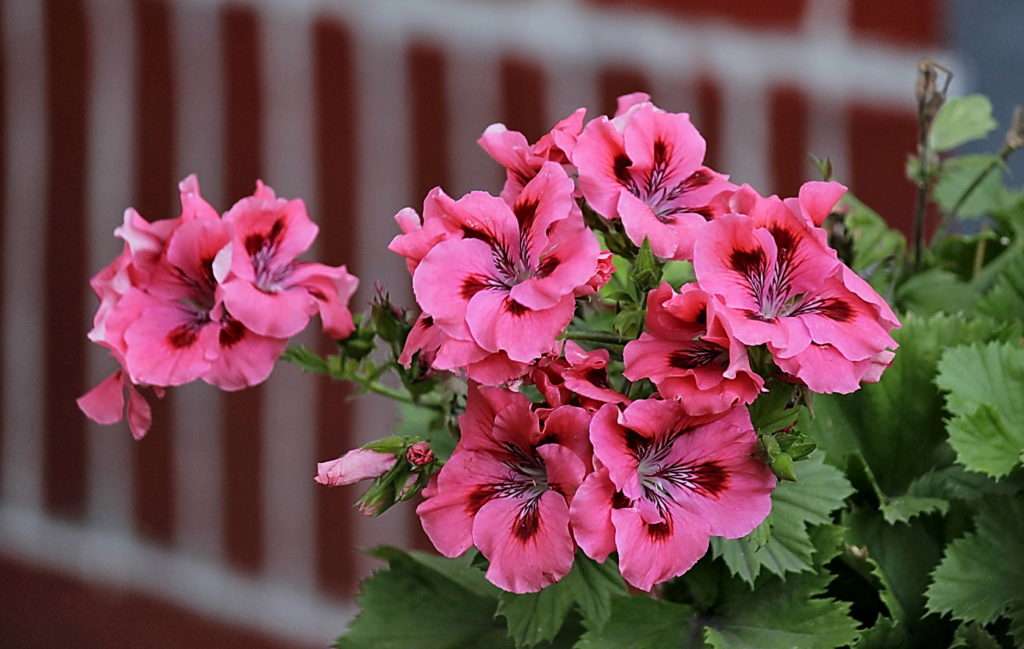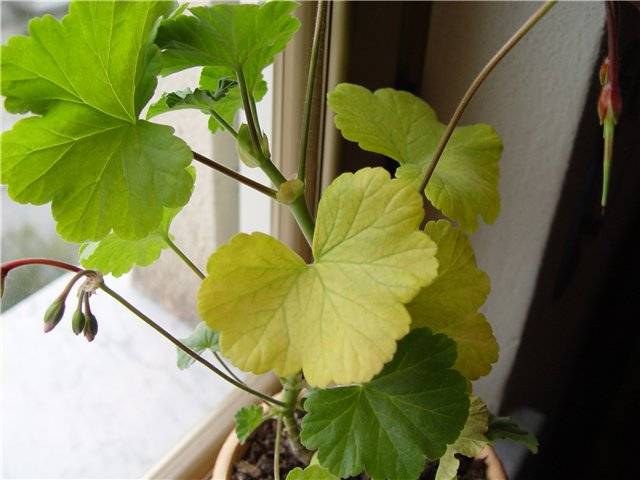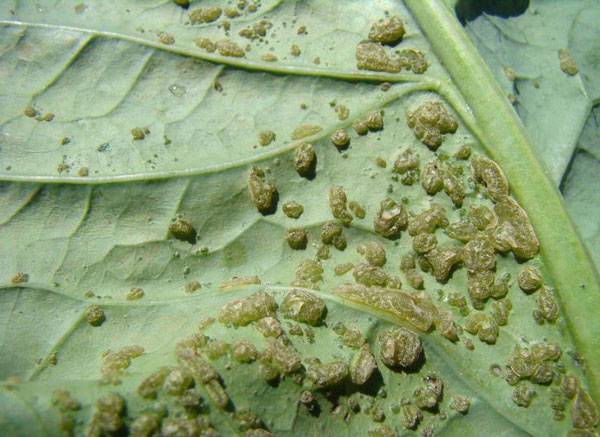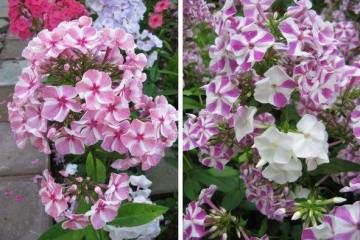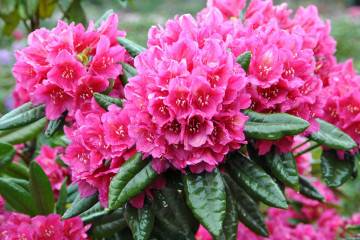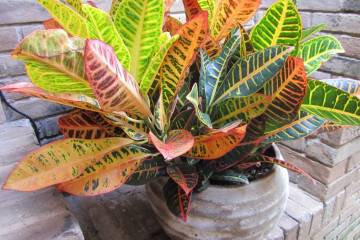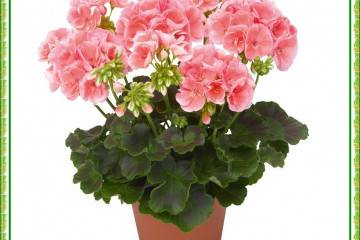Diseases of geranium, geranium leaves turn yellow and dry - what to do?
Content:
Geranium, or pelargonium, is the most popular houseplant. Such a prevalence of this flower is easy to explain: a beautiful plant has healing properties and is easy to care for. However, it is also susceptible to various diseases. How to recognize geranium diseases in time and how to deal with them correctly - further in the article.
Geranium leaves turn yellow: what to do
Most often, the leaves of a geranium houseplant turn yellow, what should I do in this case? First of all, don't panic. It is necessary to remove the yellowed leaves and start treating the plant. What is it? Everything is simple here: increase the frequency of irrigation, and use water for this purpose not directly from the tap, but settled for several days.
Then make sure that the drainage system provides the optimal moisture content in the pot. Expanded clay is most often used as it.
In the cold season, geraniums should be kept relatively cool (but not in a draft), and also away from heating appliances.
You also need to make sure the pot doesn't get too tight for the geranium and change it if that's the case. However, when transplanting into a new container, it is important not to overdo the size. If you take a pot that is too large, the main resources of the plant will be spent on growing the root system at the expense of the rest of the flower.
Why geranium leaves turn yellow
The main reason for the yellowing of the leaves in geraniums is insufficient or improper care of the plant.
In this case, depending on how the yellowing manifests itself, an accurate "diagnosis" can be made. So:
- yellowing of the lower leaves means a lack of illumination;
- yellowing of the leaves only at the edges will mean a lack of moisture in the soil;
- if this phenomenon is observed after transplanting geraniums into a new pot, then an adaptation process takes place;
- accompanied by a general lethargy of the plant - watering should be reduced.
In addition to the above reasons, yellowing of geranium leaves can be observed with a deficiency of fertilizers in the soil or an overabundance of herbicides. Also, geranium leaves can turn yellow when the root system is damaged (during transplantation) or when the water used for irrigation is very hard. Pelargonium is sensitive to air humidity: too dry or humid air also negatively affects its condition.
Geranium leaves turn red: what to do
If geranium leaves turn red, you should check the air temperature in the room where pelargonium is contained. Of course, the coolness in winter is even useful for geraniums, but during the rest of the year it should be at least 18 ° C.
You should start feeding the plant with nitrogenous and magnesium fertilizers. It is also worth remembering that geranium is a shade-loving plant, and so that the leaves do not turn red, it must be kept in partial shade. Therefore, it is worth removing it from the sunny windowsill to a less lit place.
Why do the leaves of room geranium turn red
If geranium leaves turn red, the reason for this is too cold indoor air.
Also, red pigmentation is manifested with a lack of nitrogen and magnesium in the soil, exposure to direct sunlight. But the worst thing is fungal or viral diseases of the plant. We will talk about them below.
Why do geranium leaves dry
If the temperature regime is not observed, geranium leaves turn yellow and dry. What to do in this case? Observe a simple rule: in winter, the air temperature in the room should not be higher than 12 ° С, and the rest of the time - not lower than 18 ° С.
Too dry air (in particular, from heating devices) makes the leaves of pelargonium dry out, as well as too humid. The frequency of watering and the presence of good drainage also affect geraniums.
Lack of flowering
If geranium does not want to bloom, then this indicates that the external conditions are unfavorable for this. The plant seems to feel that now is not the time to set buds. Therefore, in order to solve this problem, it is necessary to eliminate the root cause.
This may be insufficient light; too low air temperature; excess or, conversely, lack of nutrients. Also, the absence of flowering can be observed if all the forces of the plant go to the growth of the root system. This happens when the size of the pot is incorrectly selected. It is worth replanting the plant to a smaller one.
Mushroom Botrytis
This noxious fungus starts up due to the high moisture content of the soil. This is where staying hydrated is important!
Most often, the stem of the plant is affected first. Brown spots begin to appear on it, which quickly begin to rot, and then are thrown onto the leaves of the plant. They become covered with gray spots and white fluff, the flower begins to wither.
Such symptoms appear only when pelargonium is affected by the Botrytis fungus, so it is difficult to confuse it with other diseases.
To avoid the death of a plant, you must:
- Cut off the affected areas of the plant.
- Remove dead parts from the soil in the pot and remove weeds.
- In order for the soil to begin to absorb moisture better, it must be loosened.
- Treat the plant with fungicides.
Root rot
Another fungal disease that manifests itself due to an excess of moisture in the soil is root rot. It is also easy to diagnose: the plant is covered with a pale bloom, somewhat reminiscent of a spider web. It arises in the root system, and then crawls up the stem until it finally destroys the entire flower.
To deal with this scourge should be cardinal measures: replace the soil with a looser one, which will drain better so that excess moisture leaves the pot. The affected areas of geranium must be removed and for a while refrain from using nitrogenous fertilizers, as this is another reason for the appearance of root rot. Well, and finally, it is necessary to treat pelargonium with fungicides.
In general, all fungal diseases of geranium stem from too wet soil. Their list is not limited to just root rot and the Botrytis fungus. There are other types as well.
- Powdery mildew. Received the name because of the characteristic mealy bloom on the leaves. To get rid of it, you should treat the plant with sulfur: apply a thin layer on the leaves themselves in the form of powder.
- Blackleg. The stem, when affected by the fungus, begins to turn black and rot. It needs to be cut off, and the tips of the cuttings that are not diseased can be left and planted again.
- Late blight. A plant with a disease with this parasitic fungus can dry out in the eyes. Here it is necessary to cut off the affected areas and treat the plant with a fungicide.The parasitic fungus itself is most often found in the soil, so even if the affected areas are removed from the plant, a second disease may occur. Therefore, it is recommended to replace the potting soil with a new one. Many different agents are used as fungicides. To combat the fungus, a wide range of drugs can be recommended: vitaros, rovral, topaz, foundationol.
Leaf rust
Outwardly, it appears as brown and red spots on the leaves of the plant, resembling rust.
It arises due to excessive enthusiasm for watering the flower and poor drainage, since the soil simply does not have time to dry out. The method of treatment here does not fundamentally differ from previous cases: remove rusty leaves, stop watering and loosen the soil for better moisture absorption, treat the plant with fungicides.
Bacterial diseases
They are caused by pathogens, that is, poor plant care has nothing to do with it. It manifests itself at first in small spots on the leaves, the color of which can vary from yellow to brown with black veins.
Treatment of such diseases of pelargonium should begin with a complete replacement of the soil. Next, you need to remove the infected leaves from the plant and apply fertilizers containing potassium to the soil. This microelement activates biochemical processes inside geraniums, thereby making it possible to better resist diseases and fight their consequences.
Viral diseases
There are no special symptoms inherent in viral diseases. They can manifest themselves in different ways: stopping plant growth, spots of various sizes and colors, yellowed leaves, etc. Here you should also replace the soil and treat the plant with fungicides.
You should also pay attention to insects, which are most often carriers of viruses: aphids, caterpillars, whiteflies, spider mites and other midges. To combat them and prevent the appearance, you can use acetylsalicylic acid (aspirin), for which you need to dilute 1 tablet in 5 liters of water. The plant is sprayed with the resulting solution no more than 1 time per month.
Also on the market there are many other means for controlling harmful insects: monterey from caterpillars, marathon from aphids and whiteflies, etc.
Spotting
The appearance of spots can be caused by two diseases at once. With Alternaria, small spots and bubbles appear on the underside of the leaves, after which the plant begins to turn yellow and fall off. In cercosporosis, spots appear on the upper part of the leaf and are brown in color.
If spotting occurs, remove diseased leaves and treat the plant with fungicides.
Edema
A characteristic symptom of this disease is light green bubbles with liquid inside. After a while they begin to darken, acquiring a brown tint.
Geranium swelling may appear due to too moist soil and cool air in the room. To fight this disease, it is necessary to loosen the soil, refrain from watering for a while and transfer the geranium to a warmer place in the apartment.
Even an undemanding houseplant like geranium is easy to start if treated with disdain. And this is fraught with the emergence of various diseases that can lead to the death of the plant.To prevent this from happening, you need to follow a few simple rules: water on time, apply fertilizers and keep the geranium cool and shaded, from time to time check the plant for signs of disease. And then she will delight her owner with wonderful beauty all year round.
